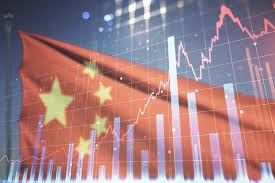Emerging markets are an important contributing factor to global economic growth. Nations moving toward development and contributing a large amount of economic output comprise these markets. Understanding what classifies a country as an emerging market can help you determine which types of countries to invest in for high capital gains. In this article, we define what an emerging market is and provide a list of nine applicable characteristics.
Recommended
What is an emerging market?

An emerging market, or emerging market economy (EME), includes the financial systems of countries in the process of becoming developed and transitioning toward a mixed or free market. These are countries that closely imitate the economies of developed nations without fully meeting the requirements for experts to label them as developed nations. Emerging markets often make strategic investments that help advance their production capacity. To do this, they attempt to transition from a traditional economy focused mostly on exporting agricultural and raw materials to one focused on manufacturing.
The overall goals of emerging markets are rapid industrialization and a better quality of life for their citizens. If experts consider a country to be an emerging market, it suggests positive economic progress in those countries.
8 characteristics of emerging markets
Here are nine characteristics of an emerging market:
1. Rapid economic growth
One way to characterize an emerging market is to analyze its economic growth or the percentage increase in its real gross domestic product (GDP). Experts typically label countries as emerging markets when they experience or surpass at least 3% in GDP growth but still do not meet the criteria of becoming a developed country.
2. High volatility
High volatility may include factors such as natural disasters and domestic policy instability. Traditional economies that are reliant on agriculture may experience vulnerability during natural disasters, but emerging markets attempt to transform their economic structure to one that can withstand such events.
High volatility may also include a country’s macroeconomic risks or external price shocks, which are events that create significant changes to a country’s economy. For example, a country that depends on natural gas and oil revenues may experience an economic crisis when there is a significant decline in energy prices globally.
3. Lower per capita income
Another characteristic to help determine whether a country is an emerging market is a country’s per capita income (PCI) amount or the average per-person income for a given area. Experts use this metric, which you can calculate by dividing a country’s national income by its population, to determine the quality and standard of living for a population. Emerging markets typically have a low or medium PCI compared to other developed countries, meaning they have low household incomes.
For instance, according to The World Bank, the U.S. has a PCI of 65,297 purchasing power parity (PPP) dollars, which is the exchange rate between other currencies and the U.S. dollar, whereas China has a PCI of 10,216 PPP dollars.
4. Currency swings
Emerging markets typically experience currency or commodity swings. Global currencies and commodities, such as food or oil, trigger these events when they rise or fall dramatically in value. For example, according to Environmental Health Perspectives, when the U.S. subsidized corn ethanol production in 2008, it caused food and oil prices to rise in certain emerging markets.
5. Regulatory body
Emerging markets tend to have a regulatory body, a market exchange for investments, and a common currency. Governments and other organizations establish these regulatory bodies to manage the fairness and functioning of financial markets. For instance, China’s common currency is the Chinese Yuan, and the country operates a regulatory body through The China Securities Regulatory Commission.
6. Transitional nature
Emerging markets also tend to be transitional or are in the process of converting from a closed economy to an open market economy. To accomplish this, they attempt to foster international trade to generate economic activity and focus more on manufacturing instead of agriculture. For example, an emerging market might reduce its protective tariffs to create competition in the international market, which helps to diversify its exports and imports. An emerging market may also reduce restrictions on creating and operating businesses within its own country.
7. Potential for growth
Emerging markets often implement policies that give them a higher potential for growth, such as advocating for rapid economic growth and industrialization. These policies often lead to a higher disposable income per capita, lower unemployment, and better infrastructure. Countries that experienced early industrialization typically instituted these changes earlier, and experts have often labeled these countries as developed now.
8. Young population
Emerging markets often have young populations, which result in large labor forces and increased capabilities to produce goods and services. Countries expecting to see a rise in their working population in the next two decades have the potential of an increased labor force.
Why are emerging markets important?
Emerging markets help foster global economic growth and are important to foreign investors. Some benefits of emerging markets for investors include:
-
Establishing a brand in a territory with little or no competition
-
Gaining prestige for expanding to an emerging market
-
Providing goods that are currently unavailable to an emerging market country
-
Earning higher capital gains and return potential
-
Diversifying an investment portfolio
What constitutes an emerging market?
While there is no universal decision on what qualifies a country to be an emerging market, several financial organizations include lists of generally accepted emerging markets. Some of their criteria include having increasingly higher per capita income levels for at least three consecutive years and allowing capital to flow freely between countries. The World Bank compiles data on various countries, including their PPP dollar amount. Currently, the Morgan Stanley Capital International Emerging Market Index (MSCI Index) lists 26 countries as emerging markets.
I hope you find this article helpful.